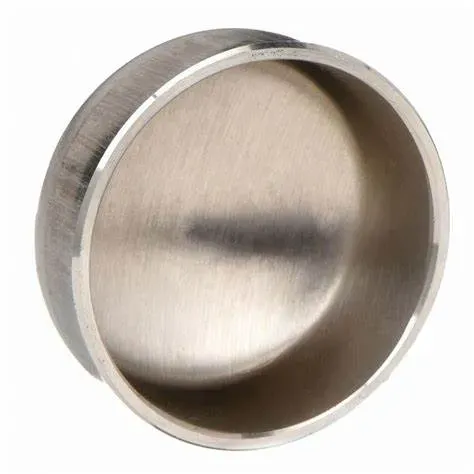-
Cangzhou Yulong Steel Co., Ltd.
-
Phone:
+86 13303177267 -
Email:
admin@ylsteelfittings.com
- English
- Arabic
- Italian
- Spanish
- Portuguese
- German
- kazakh
- Persian
- Greek
- French
- Russian
- Polish
- Thai
- Indonesian
- Vietnamese
- Zulu
- Korean
- Uzbek
- Hindi
- Serbian
- Malay
- Ukrainian
- Gujarati
- Haitian Creole
- hausa
- hawaiian
- Hebrew
- Miao
- Hungarian
- Icelandic
- igbo
- irish
- Japanese
- Javanese
- Kannada
- Khmer
- Rwandese
- Afrikaans
- Albanian
- Amharic
- Armenian
- Azerbaijani
- Basque
- Belarusian
- Bengali
- Bosnian
- Bulgarian
- Catalan
- Cebuano
- China
- China (Taiwan)
- Corsican
- Croatian
- Czech
- Danish
- Esperanto
- Estonian
- Finnish
- Frisian
- Galician
- Georgian
- Kurdish
- Kyrgyz
- Lao
- Latin
- Latvian
- Lithuanian
- Luxembourgish
- Macedonian
- Malgashi
- Malayalam
- Maltese
- Maori
- Marathi
- Mongolian
- Myanmar
- Nepali
- Norwegian
- Norwegian
- Occitan
- Pashto
- Dutch
- Punjabi
- Romanian
- Samoan
- Scottish Gaelic
- Sesotho
- Shona
- Sindhi
- Sinhala
- Slovak
- Slovenian
- Somali
- Sundanese
- Swahili
- Swedish
- Tagalog
- Tajik
- Tamil
- Tatar
- Telugu
- Turkish
- Turkmen
- Urdu
- Uighur
- Welsh
- Bantu
- Yiddish
- Yoruba

Oct . 20, 2024 20:33 Back to list
Guidelines for Installing Galvanized Pipe in Home Plumbing Systems
Installing Galvanized Pipe A Comprehensive Guide
Galvanized pipes have been a staple in plumbing applications for many years due to their durability and resistance to corrosion. Made from steel and coated with a layer of zinc, these pipes are ideal for various installations, including water supply lines and drainage systems. If you are looking to install galvanized pipe, this guide will provide you with key information and steps to ensure a successful installation.
What is Galvanized Pipe?
Galvanized pipe is manufactured by dipping steel into molten zinc, creating a protective coating that prevents rust and extends the lifespan of the pipe. These pipes are commonly used in plumbing, HVAC systems, and even as structural elements in construction. However, over the years, it has become less common in new installations due to the rise of modern alternatives like PVC and copper. Despite this, galvanized pipe remains a viable choice for specific applications.
Tools and Materials Needed
To successfully install galvanized pipe, you’ll need the following tools and materials
- Galvanized pipes and fittings Ensure you have the correct sizes and lengths for your project. - Pipe wrench A heavy-duty pipe wrench will help tighten connections without damaging the pipes. - Thread sealant or Teflon tape This is essential for creating watertight seals at the joints. - Pipe cutter or hacksaw For cutting pipes to the desired length. - Measuring tape Accurate measurements will ensure proper fit and alignment. - Protective gear Gloves and safety goggles are recommended to protect yourself while working.
Steps for Installation
1. Planning the Layout Begin by planning the layout of the pipes. Measure and mark the areas where the pipes will be installed. Ensure that the pipes are placed at appropriate angles to allow for proper water flow and drainage.
installing galvanized pipe

2. Cutting the Pipelines Use a pipe cutter or hacksaw to cut the galvanized pipes to the desired lengths. Make sure to measure twice to avoid any mistakes and ensure a proper fit.
3. Cleaning the Ends Deburr the ends of the pipes after cutting to remove any sharp edges or metal shavings. This step is crucial to ensure a good seal when connecting the pipes.
4. Applying Thread Sealant Before connecting the pipes, apply a thread sealant or wrap Teflon tape around the threads of the fittings and pipe ends. This will help create a watertight seal and prevent leaks.
5. Connecting the Pipes Screw the pipes and fittings together by hand, and use a pipe wrench to tighten them securely. Be careful not to overtighten, as this could damage the threads or the fittings.
6. Testing for Leaks Once all connections are made, turn on the water supply gradually and check for leaks. Observe all joints and connections closely for any signs of water escaping. If leaks are detected, tighten the fittings or reapply the sealant as necessary.
7. Insulating the Pipes In colder climates, consider insulating the exposed sections of the galvanized pipe. This will help prevent freezing and bursting during the winter months.
Conclusion
Installing galvanized pipe can be a straightforward task if approached methodically. With the right tools, materials, and careful planning, you can create a reliable plumbing system that stands the test of time. While there are newer options available on the market, galvanized pipes continue to offer a robust solution for various projects. Always remember to follow local plumbing codes and regulations to ensure your installation is compliant and safe. If you encounter any challenges during installation, consult with a professional plumber to get expert guidance.
Latest news
-
ANSI 150P SS304 SO FLANGE
NewsFeb.14,2025
-
ASTM A333GR6 STEEL PIPE
NewsJan.20,2025
-
ANSI B16.5 WELDING NECK FLANGE
NewsJan.15,2026
-
ANSI B16.5 SLIP-ON FLANGE
NewsApr.19,2024
-
SABS 1123 FLANGE
NewsJan.15,2025
-
DIN86044 PLATE FLANGE
NewsApr.19,2024
-
DIN2527 BLIND FLANGE
NewsApr.12,2024
-
JIS B2311 Butt-Welding Fittings LR/SR 45°/90° /180°Seamless/Weld
NewsApr.23,2024











